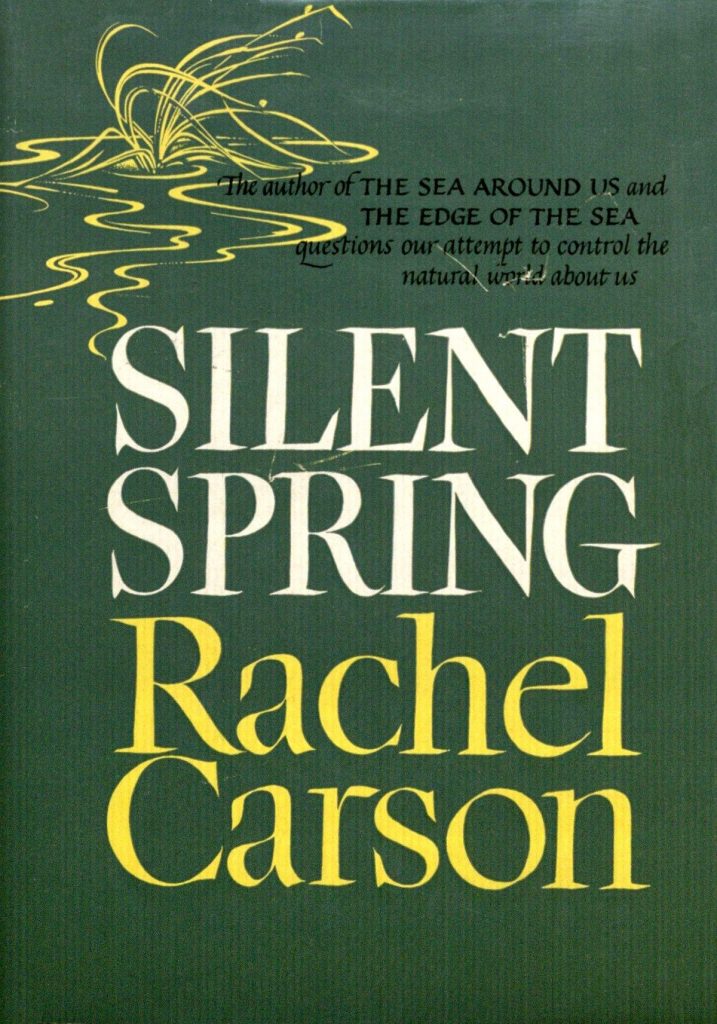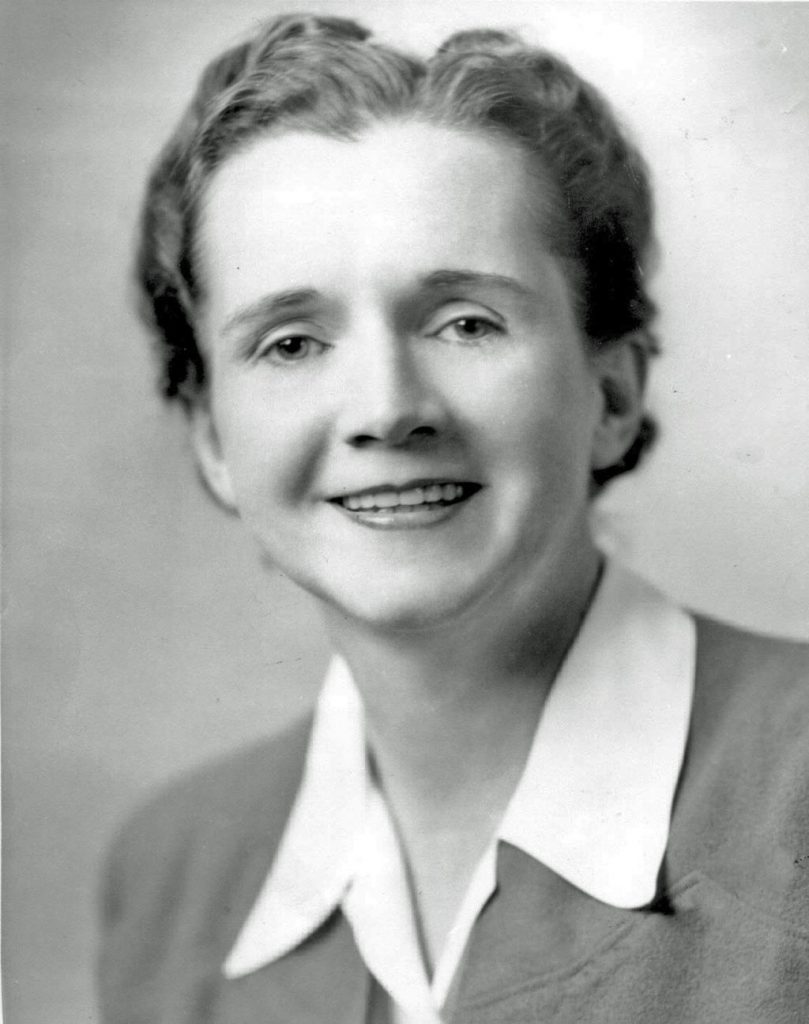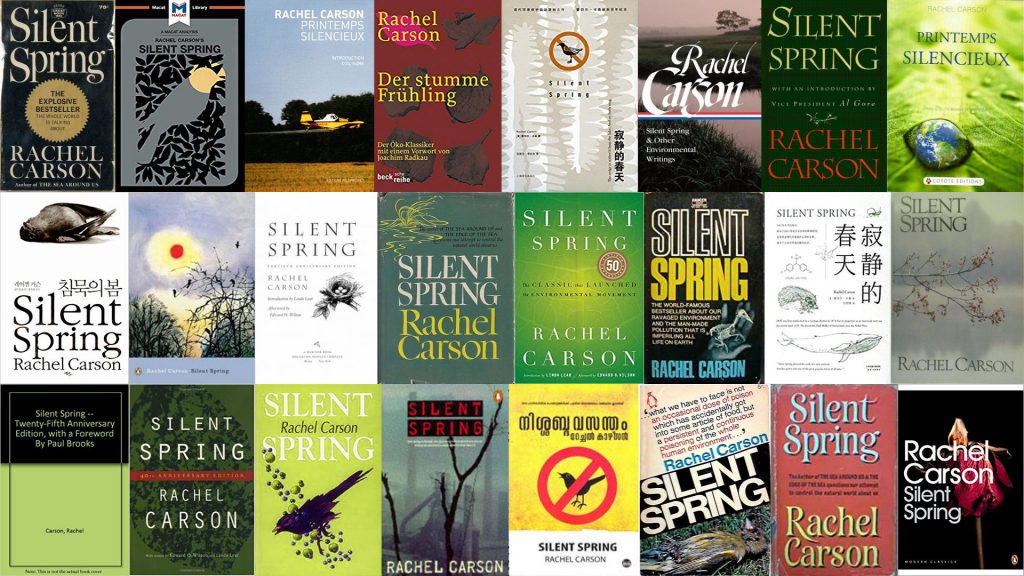TBT: Super Awesome People™ in History.
“Only within the moment of time represented by the present century has one species—man—acquired significant power to alter the nature of the world.”
Rachel Carson, Silent Spring (1962)
On September 27, 1962, American conservationist Rachel Carson published Silent Spring, a book which detailed the adverse environmental effects of the indiscriminate use of synthetic pesticides—most notably, DDT. In the weeks leading up to the book’s publication, Silent Spring was serialized in The New Yorker, and its population surged when it was chosen as the Book-of-the-Month Club pick for October 1962, guaranteeing that it would reach hundreds of thousands of readers across America.


Rachel Carson, 1944
(National Digital Library)
Rachel Carson was an aquatic biologist who worked for the U.S. Fish and Wildlife Service prior to becoming a full-time natural science writer. She wrote three books on ocean ecology (Under the Sea-Wind, 1941; The Sea Around Us, 1951; and The Edge of the Sea, 1955) before beginning research on what would become her best-known book, a “landmark work of environmental writing”. Carson first proposed writing about DDT in 1944 (Reader’s Digest turned her down), and her interest was rekindled in 1958 when a friend wrote to her with concerns about the death of numerous birds at a Massachusetts bird sanctuary following an aerial spraying of DDT.
The chemical compound DDT (Dichlorodiphenyltrichloroethane) was first synthesized in 1874, but it was scientist Paul Hermann Müller who discovered in 1939 that it could be used as an insecticide (for which he won the 1948 Nobel Prize in Physiology and Medicine). DDT was used extensively during World War II to protect troops from insects that could transmit diseases such as malaria and typhus, and its civilian and agricultural use expanded significantly following the war. Rachel Carson wasn’t the first to express concerns about the adverse environmental effects of synthetic pesticides, but she was the first to spend years gathering scientific data on how the chemicals persisted in the environment and destroyed not only insect populations, but the plants and animals that were affected by the ecosystem disruption. There was significant evidence of toxicity to humans as well, and DDT is “considered likely to be a human carcinogen although the majority of studies suggest it is not directly genotoxic.”
“It is not my contention that chemical insecticides must never be used. I do contend that we have put poisonous and biologically potent chemicals indiscriminately into the hands of persons largely or wholly ignorant of their potentials for harm. We have subjected enormous numbers of people to contact with these poisons, without their consent and often without their knowledge.”
Rachel Carson, Silent Spring (1962)
The National Resources Defense Council (NRDC) summarized the book in this way: “Silent Spring took Carson four years to complete. It meticulously described how DDT entered the food chain and accumulated in the fatty tissues of animals, including human beings, and caused cancer and genetic damage. A single application on a crop, she wrote, killed insects for weeks and months—not only the targeted insects but countless more—and remained toxic in the environment even after it was diluted by rainwater. Carson concluded that DDT and other pesticides had irrevocably harmed animals and had contaminated the world’s food supply.”
Although fully banning chemical pesticides wasn’t Carson’s goal, DDT was banned from agriculture use in the United States in 1972, due in large part to the outcry Silent Spring inspired. Further bans and restrictions followed around the world because of concerns about the chemical’s toxic effects, as well as insects’ increasing resistance to pesticides. Unfortunately, Carson didn’t live to see the environmental movement and government-led changes her book would inspire. First diagnosed with breast cancer in 1950, she battled the disease for several years while writing and promoting her final book. Rachel Carson died in 1964 at age 56, less than two years after Silent Spring was published.
“[O]ne of the core lessons of Silent Spring was that things labelled progress weren’t necessarily good. Another was that the perceived split between man and nature isn’t real: the inside of your body is connected to the world around you, and your body too has its ecology, and what goes into it – whether eaten or breathed or drunk or absorbed through your skin – has a profound impact on you. We’re so used to thinking this way now that it’s hard to imagine a time when general assumptions were different. But before Carson, they were.”
Margaret Atwood, writing about Silent Spring, 50 years later
The ban on DDT was just one result of Silent Spring‘s influence. The nascent environmental movement was energized by the book, and increased activism directly led to the creation of Earth Day and the Environmental Protection Agency in 1970. Of course, Silent Spring wasn’t without its controversies. Many people have accused Carson’s book of being an anti-pesticide screed and have blamed her (and other environmentalists) for the persistence of deadly mosquito-borne diseases like malaria in the developing world. But like the current movement of climate change-deniers, the forces opposed to Silent Spring‘s revelations were orchestrated by the very companies most inconvenienced by stringent government regulations. Over the last 58 years, we have made much progress to protect the health of our planet. But not enough.
“Now, I truly believe, that we in this generation, must come to terms with nature, and I think we’re challenged as mankind has never been challenged before to prove our maturity and our mastery, not of nature, but of ourselves.”
Rachel Carson, 1963, “C.B.S. Reports”
Read More About Rachel Carson and Silent Spring:
- The Life and Legacy of Rachel Carson (rachelcarson.org)
- Silent Spring—I (The New Yorker)
- The Story of Silent Spring (NRDC.org)
- How ‘Silent Spring’ Ignited the Environmental Movement (The New York Times Magazine)
- Feb. 3, 1958: Silent Spring Seeks Its Voice (Wired)
- Margaret Atwood: Rachel Carson’s Silent Spring, 50 Years On (The Guardian)
- The Writing of “Silent Spring”: Rachel Carson and the Culture-Shifting Courage to Speak Inconvenient Truth to Power (BrainPickings)
- Silent Spring Summary (Litcharts.com)
- Silent Spring Revisited (PBS Frontline)
- Rachel Carson Didn’t Kill Millions of Africans (Slate.com)
- Rehabilitating Carson (Prospect Magazine)
- Beyond Silent Spring: An Alternate History of DDT (ScienceHistory.org)
- In Retrospect: Silent Spring (Nature.com)